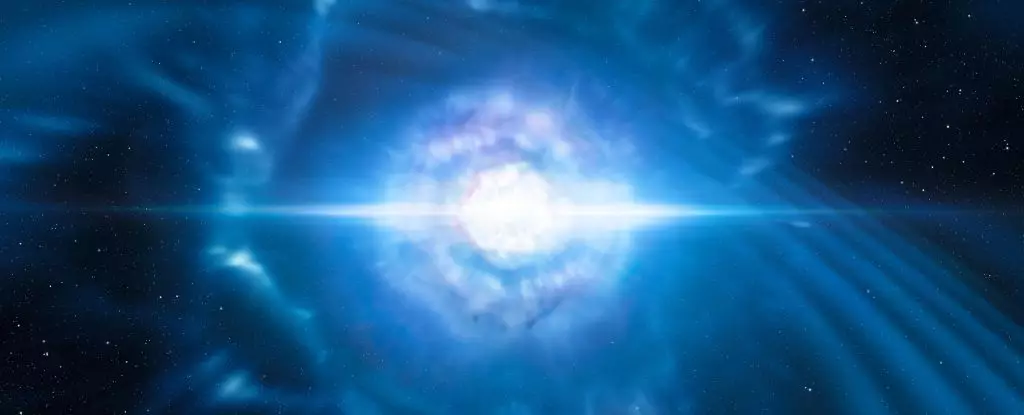When we gaze up at the night sky, we marvel at the beauty and grandeur of the stars. But, have you ever stopped to wonder about the incredible power and potential hiding within those distant celestial bodies? Scientists have long theorized that stars possess the ability to create elements far heavier than anything found naturally occurring on Earth or anywhere else in the Universe. This groundbreaking discovery has been recently substantiated by a team of astronomers led by Ian Roederer from the University of Michigan. By meticulously examining 42 stars in the Milky Way, they have brought to light the perplexing phenomenon of element production with atomic masses over 260. In this article, we will delve into the captivating world of stellar fusion, self-destruction, and the enigmatic processes that contribute to the creation of elements.
The Astonishing Power of Stars
Stars are the originators of the vast majority of elements in the Universe, apart from hydrogen. The primary method for element production in stars is fusion – the amalgamation of atoms in their cores, resulting in heavier elements. However, fusion can only generate elements as heavy as iron. Beyond this point, the immense energy required for fusion surpasses the energy generated, leading to the star’s self-destruction. This monumental explosion, known as a supernova, or the collision of two neutron stars called kilonova, creates the ideal conditions for another process called the ‘rapid neutron-capture process’ or r-process. In this process, loose neutrons latch onto available nuclei, rapidly forming heavier elements such as gold, platinum, thorium, and uranium. Nevertheless, the specifics of element creation are still shrouded in mystery, leaving scientists with numerous unanswered questions.
Although we have a general understanding of the r-process, the extreme conditions required for its occurrence make it challenging to uncover its intricacies. Ian Roederer poignantly explains, “We have a general idea of how the r-process works, but the conditions of the process are quite extreme.” The scientific community yearns for answers about the variety of sites in the Universe capable of generating the r-process, its ultimate conclusion, and the limit of neutron addition. To shed some light on these unknowns, Roederer’s team decided to investigate fission products in well-studied ancient stars, aiming to provide insights into the mysteries surrounding element generation.
In their pursuit of knowledge, Roederer and his team turned their attention to nuclear fission, a process wherein an atom splits apart, resulting in the formation of a less massive element. By studying the chemical compositions of the 42 stars in the Milky Way, the team discovered that these ancient stars were predominantly composed of hydrogen. These stars produced elements in their cores, subsequently perishing and spreading these elements throughout space, shaping the formation of subsequent generations of stars. The team specifically sought elements that could be attributed to fission, including ruthenium, rhodium, palladium, and silver. Rather than analyzing the stars individually, the researchers examined them collectively, leading to the revelation of an intriguing pattern.
Unlocking the Clues
The team’s analysis pointed to the presence of abundance ratios indicating the production of elements through the r-process. However, these ratios were conspicuously absent. Based on this significant finding, the researchers concluded that fission was the likely explanation for the observed elements. This extraordinary revelation suggests that the early stars, from which these metals originated, had the ability to produce elements with atomic masses exceeding 260, subsequently undergoing fission and transforming into lighter, more stable elements. Astonishingly, these elements have never been observed in their naturally occurring state anywhere in the Universe. Although we have briefly witnessed them in laboratories, their short half-lives cause them to decay almost instantaneously. However, by scrutinizing the potential fission products of these elusive elements, scientists can gain insights into their prevalence and likelihood of formation throughout the expansive Universe.
The study led by Ian Roederer and his team ushers us into a realm of discovery and wonder, shedding light on the remarkable capabilities of stars in producing elements beyond our wildest imagination. Through fusion, supernovae, and the enigmatic r-process, stars have forged the building blocks of our Universe, seeding space with precious elements like gold, platinum, thorium, and uranium. However, the mystery surrounding element creation persists, urging scientists to delve further into uncovering the secrets of the Universe. As our understanding deepens, we inch closer to answering profound questions about the nature of our existence and the astounding power hidden within the stars.


Leave a Reply